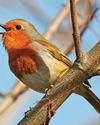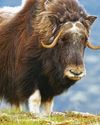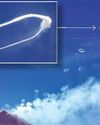
When you look up at a clear night sky, you see space: a vast, seemingly infinite expanse that contains everything humans know to exist. To find out what lies beyond, a good place to start is to figure out where the universe ends. The problem is, scientists don’t know where space ends or if it ends at all.
The observable universe
The furthest humans can see out into space, using all the technology currently available to us, is 46 billion light-years (a light-year is the distance that light can travel in one year, and is equal to about 9.5 million kilometres). The volume of space that humans can see is called the observable universe. We don’t know what is out there beyond this. Perhaps it’s more galaxies and stars and space. Perhaps it’s the edge of the universe. Some think that the universe is infinite, meaning space goes on forever in every direction. In this case, there is nothing after space, because space is everything.
Life on the edge
This story is from the Issue 66 edition of The Week Junior Science+Nature UK.
Start your 7-day Magzter GOLD free trial to access thousands of curated premium stories, and 8,500+ magazines and newspapers.
Already a subscriber ? Sign In
This story is from the Issue 66 edition of The Week Junior Science+Nature UK.
Start your 7-day Magzter GOLD free trial to access thousands of curated premium stories, and 8,500+ magazines and newspapers.
Already a subscriber? Sign In

SUGAR RUSH
Join the candy craze as Claire Karwowski studies the sugary science of sweets.

Wildlife watch
Stevie Derrick shows you what to spot in nature this month

The Sixth Sense
Could humans have more than five senses?

Catherine Heymans
Meet the starry-eyed astronomer who loves backyard stargazing.

WORLD OF WHIFFS
Stevie Derrick follows her nose to track down the world's grossest stinks and nastiest niffs.

Dogs can understand names of objects
Humans enjoy talking to their dogs. If you have a four-legged friend of your own, you might have taught them to respond to commands like \"sit\" and \"stay\".

Smoke rings in the sky
In April, videos were filmed of Mount Etna, a volcano on the Italian island of Sicily, puffing what looked like smoke rings into the sky.

Huge gold nugget found
A gold nugget that could be the largest ever found in England was recently put up for auction. Metal detectorist Richard Brock discovered the nugget on farmland during an organised expedition in Shropshire last year.

Evolutionary tree shows birds in a new light
Researchers have produced the most detailed evolutionary tree of birds ever.

The largest plane to ever fly
Take a first look at the mighty Radia WindRunner aircraft